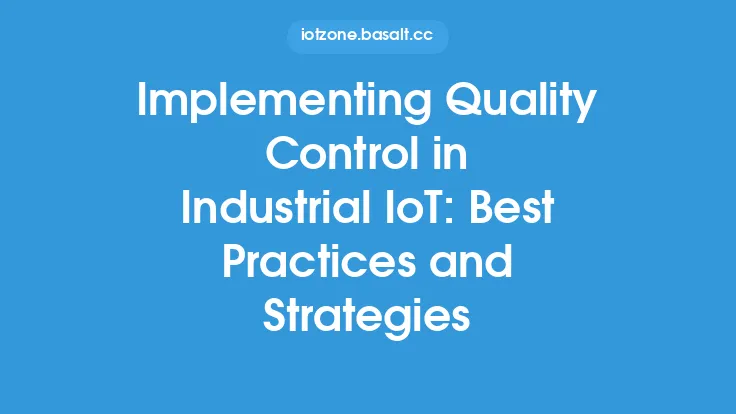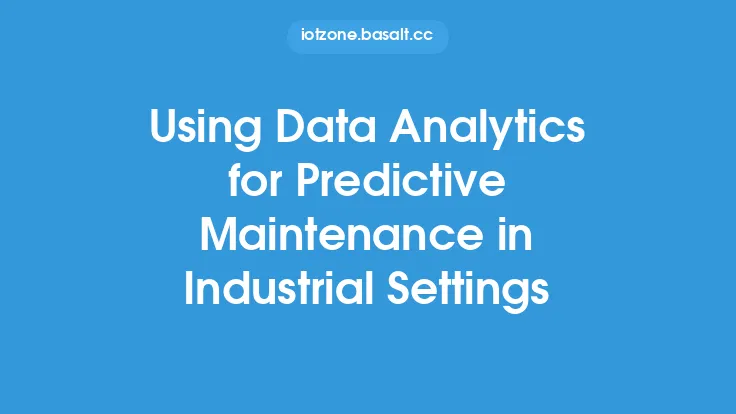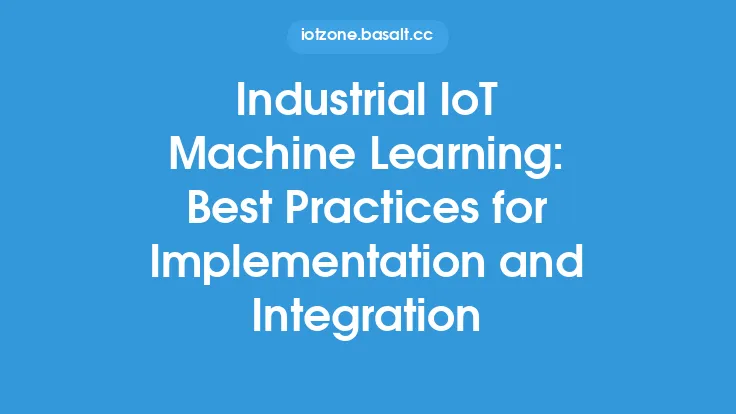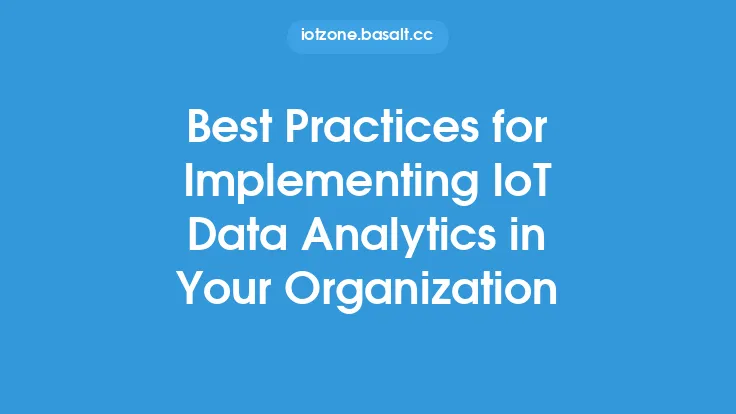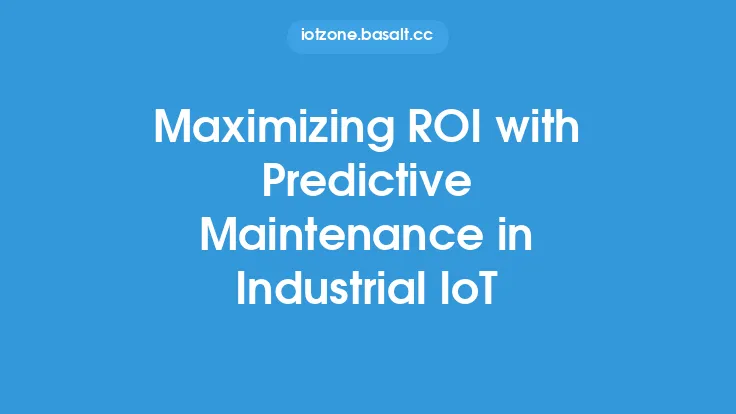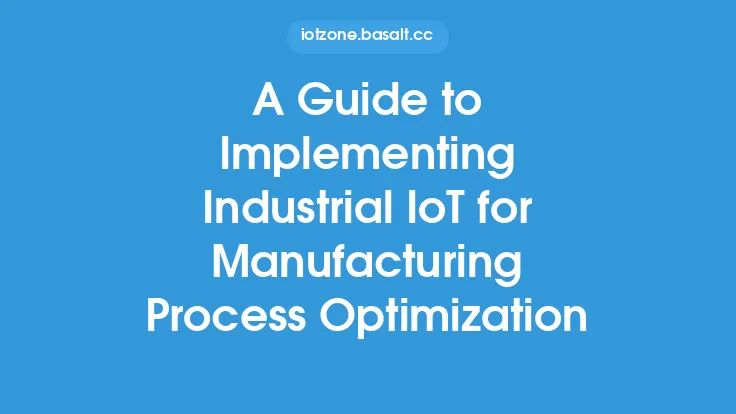Implementing predictive maintenance in Industrial IoT (IIoT) environments requires a strategic approach to maximize its benefits. Predictive maintenance is a proactive maintenance strategy that uses advanced technologies, such as machine learning, artificial intelligence, and data analytics, to predict equipment failures and schedule maintenance accordingly. This approach helps reduce downtime, increase equipment reliability, and optimize maintenance costs. To successfully implement predictive maintenance in IIoT, several best practices should be followed.
Understanding the Fundamentals of Predictive Maintenance
Predictive maintenance relies on the analysis of real-time data from sensors and machines to identify potential equipment failures. This data is used to build predictive models that can forecast when maintenance is required. The process involves several steps, including data collection, data analysis, model building, and model deployment. Data collection involves gathering data from various sources, such as sensors, machines, and maintenance records. This data is then analyzed using advanced analytics techniques, such as machine learning and statistical analysis, to identify patterns and trends. The insights gained from this analysis are used to build predictive models that can forecast equipment failures.
Selecting the Right Technologies and Tools
The success of predictive maintenance depends on the selection of the right technologies and tools. Some of the key technologies used in predictive maintenance include IoT sensors, data analytics platforms, machine learning algorithms, and cloud computing. IoT sensors are used to collect data from machines and equipment, while data analytics platforms are used to analyze this data. Machine learning algorithms are used to build predictive models, and cloud computing provides the infrastructure to deploy these models. Other tools, such as computerized maintenance management systems (CMMS) and enterprise asset management (EAM) systems, are also used to manage maintenance activities and track equipment performance.
Developing a Predictive Maintenance Strategy
A predictive maintenance strategy should be developed to guide the implementation of predictive maintenance. This strategy should include several key elements, such as defining maintenance goals, identifying critical equipment, and selecting predictive models. Maintenance goals should be defined based on business objectives, such as reducing downtime or increasing equipment reliability. Critical equipment should be identified based on its impact on business operations, and predictive models should be selected based on their accuracy and reliability. The strategy should also include a plan for data collection, data analysis, and model deployment.
Implementing Predictive Maintenance
Implementing predictive maintenance involves several steps, including data collection, data analysis, model building, and model deployment. Data collection involves gathering data from various sources, such as sensors, machines, and maintenance records. This data is then analyzed using advanced analytics techniques, such as machine learning and statistical analysis, to identify patterns and trends. The insights gained from this analysis are used to build predictive models that can forecast equipment failures. These models are then deployed in a production environment, where they can be used to predict equipment failures and schedule maintenance accordingly.
Monitoring and Evaluating Predictive Maintenance
Predictive maintenance should be continuously monitored and evaluated to ensure its effectiveness. This involves tracking key performance indicators (KPIs), such as equipment reliability, downtime, and maintenance costs. These KPIs should be used to evaluate the effectiveness of predictive maintenance and identify areas for improvement. The predictive models should also be continuously updated and refined to ensure their accuracy and reliability. This involves retraining the models with new data and adjusting their parameters to improve their performance.
Overcoming Challenges and Limitations
Implementing predictive maintenance can be challenging, and several limitations should be addressed. One of the key challenges is data quality, which can affect the accuracy and reliability of predictive models. Other challenges include the complexity of predictive models, the need for specialized skills, and the cost of implementation. To overcome these challenges, organizations should invest in data quality initiatives, develop simple and interpretable models, and provide training and support for maintenance personnel. The cost of implementation should also be carefully managed, and a return on investment (ROI) analysis should be conducted to ensure the effectiveness of predictive maintenance.
Ensuring Security and Scalability
Predictive maintenance should be designed with security and scalability in mind. This involves ensuring the security of data and models, as well as the scalability of the predictive maintenance system. Data and models should be protected from unauthorized access, and the system should be designed to handle large volumes of data and traffic. The system should also be scalable, allowing it to grow and adapt to changing business needs. This involves using cloud computing and other scalable technologies to deploy predictive models and manage maintenance activities.
Integrating Predictive Maintenance with Other Maintenance Strategies
Predictive maintenance should be integrated with other maintenance strategies, such as preventive maintenance and corrective maintenance. Preventive maintenance involves scheduling maintenance activities at regular intervals, while corrective maintenance involves performing maintenance activities in response to equipment failures. Predictive maintenance can be used to optimize preventive maintenance schedules and reduce the need for corrective maintenance. This involves using predictive models to identify potential equipment failures and scheduling maintenance activities accordingly.
Conclusion
Implementing predictive maintenance in IIoT environments requires a strategic approach that involves understanding the fundamentals of predictive maintenance, selecting the right technologies and tools, developing a predictive maintenance strategy, implementing predictive maintenance, monitoring and evaluating predictive maintenance, overcoming challenges and limitations, ensuring security and scalability, and integrating predictive maintenance with other maintenance strategies. By following these best practices, organizations can maximize the benefits of predictive maintenance and improve the reliability and efficiency of their equipment and operations.
